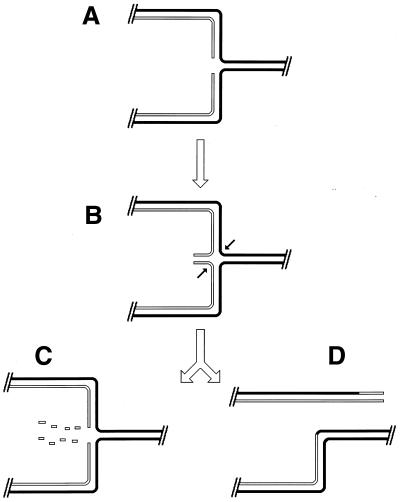FIG. 21.
Replication fork reversal as the mechanism of replication fork breakage. A replication fork is shown moving from left to right; solid lines indicate parental strands; open lines indicate newly synthesized strands. (A) The progress of the replication fork is blocked (replisome mulfunctioning, a protein bound to DNA). (B) This results in replication fork reversal to generate a double-strand end, composed of the newly synthesized DNA strands, and a Holliday junction. (C) ExoV-catalyzed degradation of the double-strand end eliminates the Holliday junction. (D) Alternatively, resolution of the Holliday junction by RuvABC (small arrows in panel B) breaks the replication fork.

